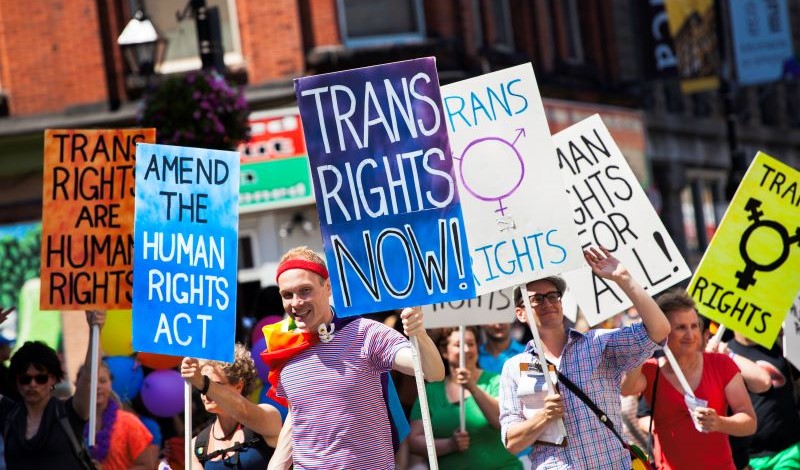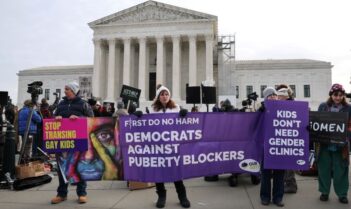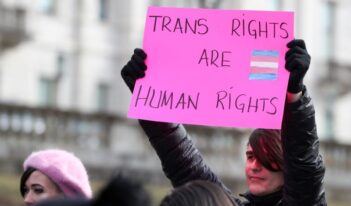
The Supreme Court considers how the equal protection doctrine applies to transgender individuals.
In a highly anticipated decision, United States v. Skrmetti, the U.S. Supreme Court addressed for the first time how equal protection principles apply to discrimination against transgender people. The Court’s six conservatives upheld a Tennessee ban on gender affirming care for trans minors. The case—which featured separate concurrences from Justices Clarence Thomas, Samuel Alito, and Amy Coney Barrett and a searing dissent from Justice Sonia Sotomayor—is a watershed for trans rights and a potential indicator of sex discrimination law’s future.
A central question in Skrmetti concerned the appropriate constitutional standard of review for laws that discriminate against transgender people. In its 2020 decision in Bostock v. Clayton County, the Court held that an employer who fires an employee for being gay or trans violates the statutory prohibition on sex discrimination in Title VII of the Civil Rights Act of 1964. In Skrmetti, LGBTQ+ advocates hoped the Court would apply intermediate scrutiny, the standard of review applicable to sex discrimination, which requires that sex-based classifications be substantially related to an important governmental objective. The majority declined to do so, in an opinion whose dubious logic may paradoxically help cabin its consequences.
Skrmetti involved Tennessee’s ban on all medical treatments done “for the purpose of” allowing “a minor to identify with, or live as, a purported identity inconsistent with the minor’s sex” or to address “discordance between the minor’s sex and asserted identity.” The law’s stated aim is to encourage minors to appreciate their sex.” The statute outlaws puberty-blockers and hormones to treat “gender dysphoria, gender identity disorder, or gender incongruence,” but allows them for other purposes, including to treat precocious puberty, or unwanted body hair or breast tissue, so long as the treatments are consistent with the minor’s sex assigned at birth. Health care providers who violate this ban may face private lawsuits and lose their medical license.
The plaintiffs—three trans teenagers, their parents, and a physician, represented by the American Civil Liberties Union—argued that the ban unconstitutionally discriminates by conditioning the legality of treatments on their alignment with a minor’s assigned sex. For example, a child considered male could receive testosterone, but a child considered female could not. Intermediate scrutiny therefore should apply—both because the law classifies based on sex and because it discriminated against transgender people.
The majority rejected both arguments. Chief Justice John Roberts’s opinion for the Court concluded that the statute classifies only based on age and “medical use,” not sex or transgender status. The law, the majority reasoned, proscribes puberty blockers or hormones “to treat gender dysphoria, gender identity disorder, or gender incongruence,” regardless of the minor’s sex, and “minors of any sex may be administered puberty blockers or hormones for other purposes.” Similarly, the law does not discriminate based on transgender status, but “rather removes one set of diagnoses—gender dysphoria, gender identity disorder, and gender incongruence—from the range of treatable conditions.” States can make such distinctions under Geduldig v. Aiello, a 1974 ruling that a state’s exclusion of pregnancy-related disabilities from insurance coverage did not discriminate based on sex. Nor, the majority reasoned, did Bostock require a different result. There, an employer “penalized a member of one sex for a trait or action that it tolerates in members of the other,” which Tennessee’s law did not do.
Accordingly, the majority applied rational basis review, the lowest level of constitutional review, which requires only that a classification be rationally related to a legitimate government interest. The risks such treatments carry and the “fierce scientific and policy debates about the safety, efficacy, and propriety of these medical treatments in an evolving field” satisfied this lenient standard, justifying the Court’s decision to “leave questions regarding its policy to the people, their elected representatives, and the democratic process.”
The majority’s conclusion that the Tennessee ban does not discriminate based on sex is clearly infirm. Justice Sotomayor’s dissent explains that if “Tennessee prohibited minors from attending ‘any services, rituals, or assemblies if done for the purpose of allowing the minor to identify with a purported identity inconsistent with the minor’s religion,’” then “no one would seriously dispute that such a rule classifies on the basis of religion … A Jewish child can visit a synagogue but not a church, while a Christian child can attend church but not the synagogue.”
The Court’s 1967 decision in Loving v. Virginia rejected similar logic when it struck down a law banning interracial marriage, despite Virginia’s contention that the law treated each race equally. As Loving makes clear, a law that punishes individuals because they marry across racial lines is still discrimination because of race, even if it prohibits “race-inconsistent” marriages for everyone. The majority’s reasoning in Skrmetti could endanger most of modern sex discrimination law, which prevents the state from penalizing individuals for acting in ways considered inconsistent with their sex.
Similarly, to avoid the conclusion that Tennessee’s ban classifies based on transgender status, the Court leans into Geduldig’s premise that heightened scrutiny is inappropriate for laws regulating “a medical procedure that only one sex can undergo unless the regulation is a mere pretext for invidious sex discrimination.” The majority also contended, improbably, that the law distinguishes based not on transgender status but on the “medical use” of given treatments.
But as Justice Sotomayor pointed out, forbidding a medical use to treat the desire “to ‘identify with’ a gender identity inconsistent with sex is, of course, exactly what it means to be transgender.” And Geduldig’s reasoning, previously thought to have been superseded by decisions such as United States v. Virginia in 1996 and Nevada v. Hibbs in 2003, suggests that sex classifications are unproblematic when rooted in biological differences, long a key justification for limiting women’s roles and opportunities. More fundamentally, the very purpose of heightened scrutiny is to distinguish valid classifications—even those rooted in “biological” differences—from those that invidiously discriminate.
Still, Skrmetti’s flaws may redound to the benefit of future antidiscrimination challengers. The majority tied itself in logical knots in part to dodge a decision on the standard-of-review question that could have devastated the prospects for combating discrimination based on transgender status and sex more generally. The majority’s analytical contortions could allow Skrmetti to be interpreted narrowly, as a carve-out for “controversial” medical treatments rather than a commentary on sex discrimination law generally.
Similarly, the Court’s characterization of Tennessee’s ban as rooted in neither animus nor sex-based stereotypes required unpersuasive intellectual gymnastics that nevertheless may mitigate broader damage. The Court reaffirmed that laws based in either are constitutionally suspect, preserving those doctrines to fight another day. Crucially, only Justice Thomas suggested that the Equal Protection Clause of the U.S. Constitution’s 14th Amendment should not, for originalist reasons, protect against sex discrimination at all.
Although Skrmetti was a stinging loss for the LGBTQ+ movement and for sex discrimination law, the decision’s impact is not irreversible. Nor is it the last word: The Court has agreed to hear two cases challenging state laws about transgender athletes, suggesting that the Court may soon decide the questions Skrmetti left open.
This essay is part of a series, titled “The Supreme Court’s 2024-2025 Regulatory Term.”





